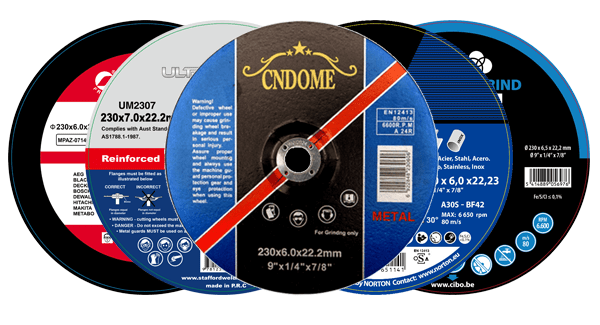Aluminum oxide grinding wheel is one of the most popular choices in industrial and DIY grinding applications due to their versatility, durability, and cost-effectiveness. Whether you’re smoothing metal surfaces, sharpening tools, or performing precision grinding, these wheels can meet a variety of needs. This blog explores the features, types, applications, and benefits of aluminum oxide grinding wheels.
What Are Aluminum Oxide Grinding Wheels?
Aluminum oxide is a synthetic abrasive known for its toughness and hardness. Grinding wheels made from this material are highly effective for grinding, sanding, and finishing a wide range of materials, including metal, wood, and plastic. They are manufactured by bonding aluminum oxide grains with a suitable binder, resulting in a wheel that delivers consistent performance.
Key Features of Aluminum Oxide Grinding Wheels
- High Durability: Resistant to wear and tear, they last longer in demanding applications.
- Heat Resistance: Excellent for prolonged grinding sessions without compromising efficiency.
- Versatility: Suitable for both ferrous (e.g., steel) and non-ferrous (e.g., aluminum) materials.
- Wide Grit Range: Available in coarse, medium, and fine grit options for varied applications.
Types of Aluminum Oxide Grinding Wheels
- Straight Wheels: Commonly used for surface grinding and sharpening tools.
- Type 27 (Depressed Center): Designed for heavy-duty grinding and material removal.
- Cut-Off Wheels: Perfect for cutting through metal rods, sheets, and pipes.
- Cup Wheels: Best for surface finishing and edge grinding.
- Bench Grinder Wheels: Widely used in workshops for tool sharpening and polishing.
Common Applications
- Metalworking: Grinding steel, stainless steel, and cast iron.
- Woodworking: Smoothing and finishing wooden surfaces.
- Tool Sharpening: Maintaining cutting edges on tools like chisels and knives.
- Automotive Repair: Removing rust, paint, and weld splatter from vehicles.
- Construction: Polishing concrete surfaces and grinding structural materials.
Advantages of Aluminum Oxide Grinding Wheels
- Cost-Effective: Affordable compared to other grinding wheel types like silicon carbide.
- Efficient Material Removal: Removes material quickly while minimizing heat buildup.
- Customizable: Available in various sizes, shapes, and bonding types to suit specific needs.
- Safer Operation: Provides consistent performance, reducing the risk of breakage during use.
Selecting the Right Aluminum Oxide Grinding Wheel
- Material Compatibility: Ensure the wheel matches the material being worked on.
- Grit Size: Coarser grits for heavy material removal, finer grits for polishing and finishing.
- Wheel Size: Choose a size compatible with your tool for optimal results.
- Bond Type: Select vitrified bonds for precision work and resin bonds for high-speed grinding.
Maintenance Tips for Prolonging Wheel Life
- Store wheels in a cool, dry place to prevent damage.
- Inspect wheels for cracks or chips before use.
- Use appropriate safety gear, including goggles and gloves.
- Follow the manufacturer’s recommended operating speed.
- Dress the wheel regularly to maintain its shape and cutting efficiency.
Conclusion
Aluminum oxide grinding wheel is an indispensable tool in various industries, offering durability, versatility, and affordability. By understanding their types, applications, and maintenance needs, you can maximize their efficiency and achieve the desired results in your projects. Whether you are a professional metalworker or a DIY enthusiast, these wheels are a reliable choice for grinding, cutting, and finishing tasks.
For more insights into grinding wheels and other abrasives, stay tuned to our blog!



